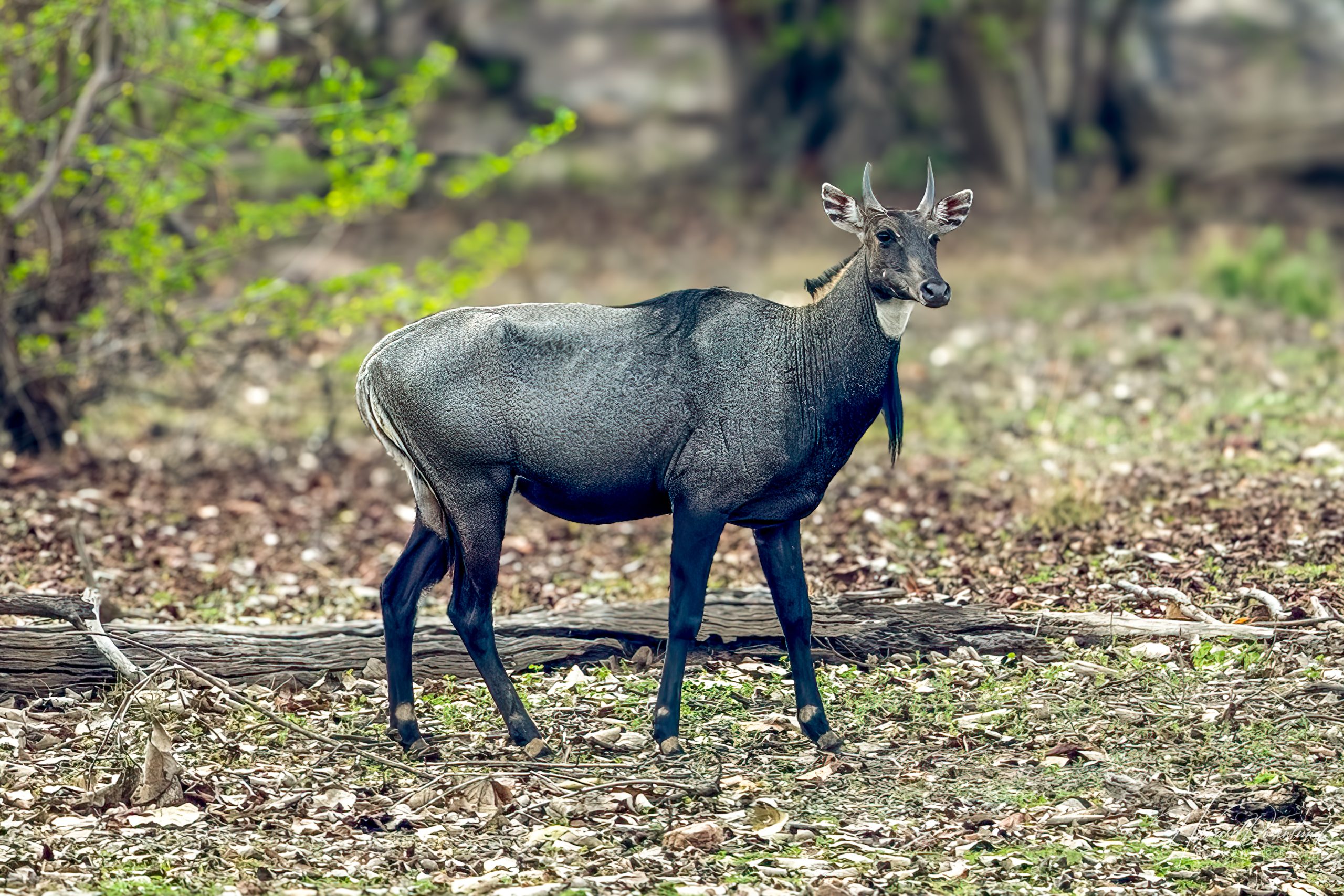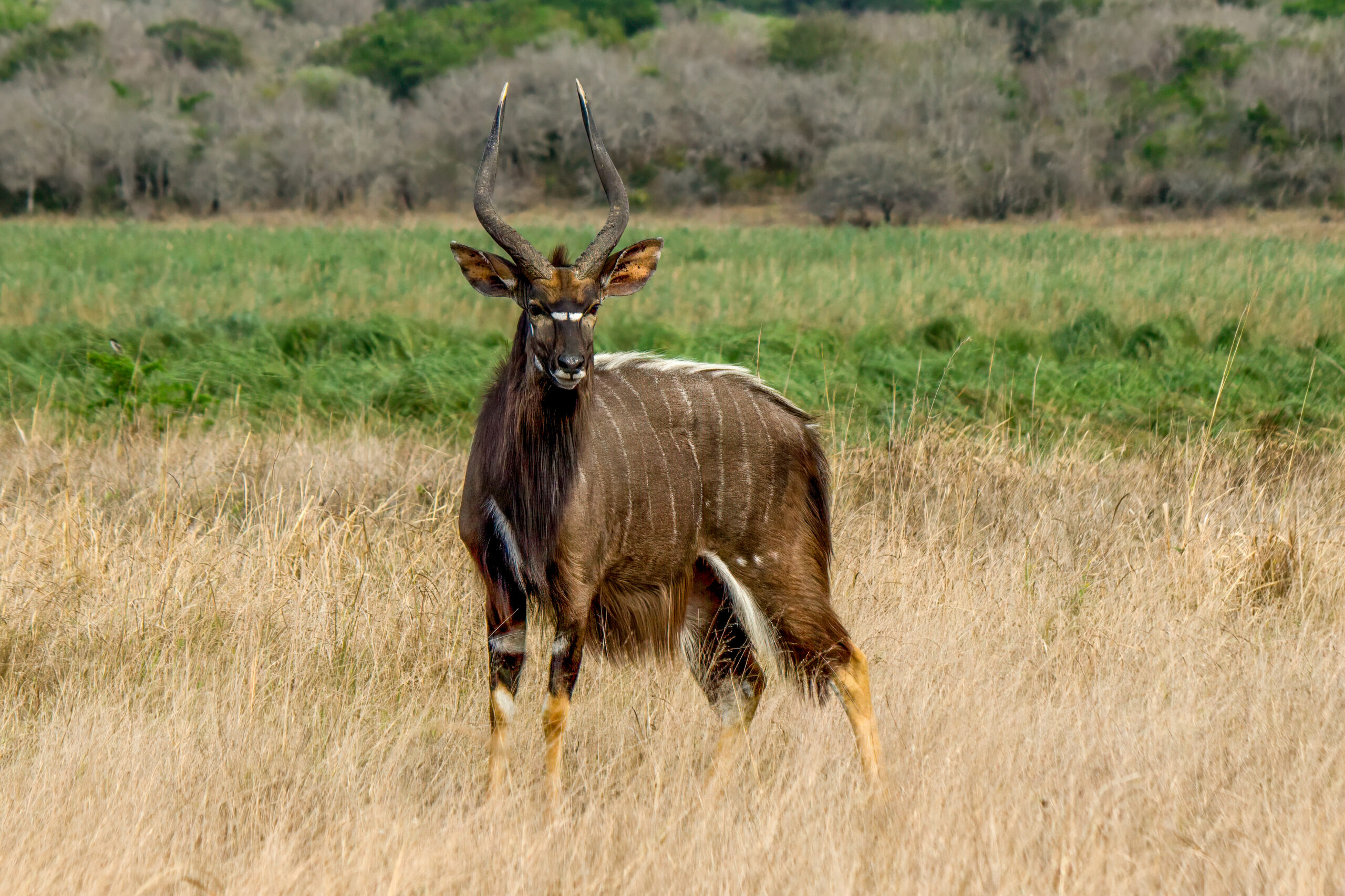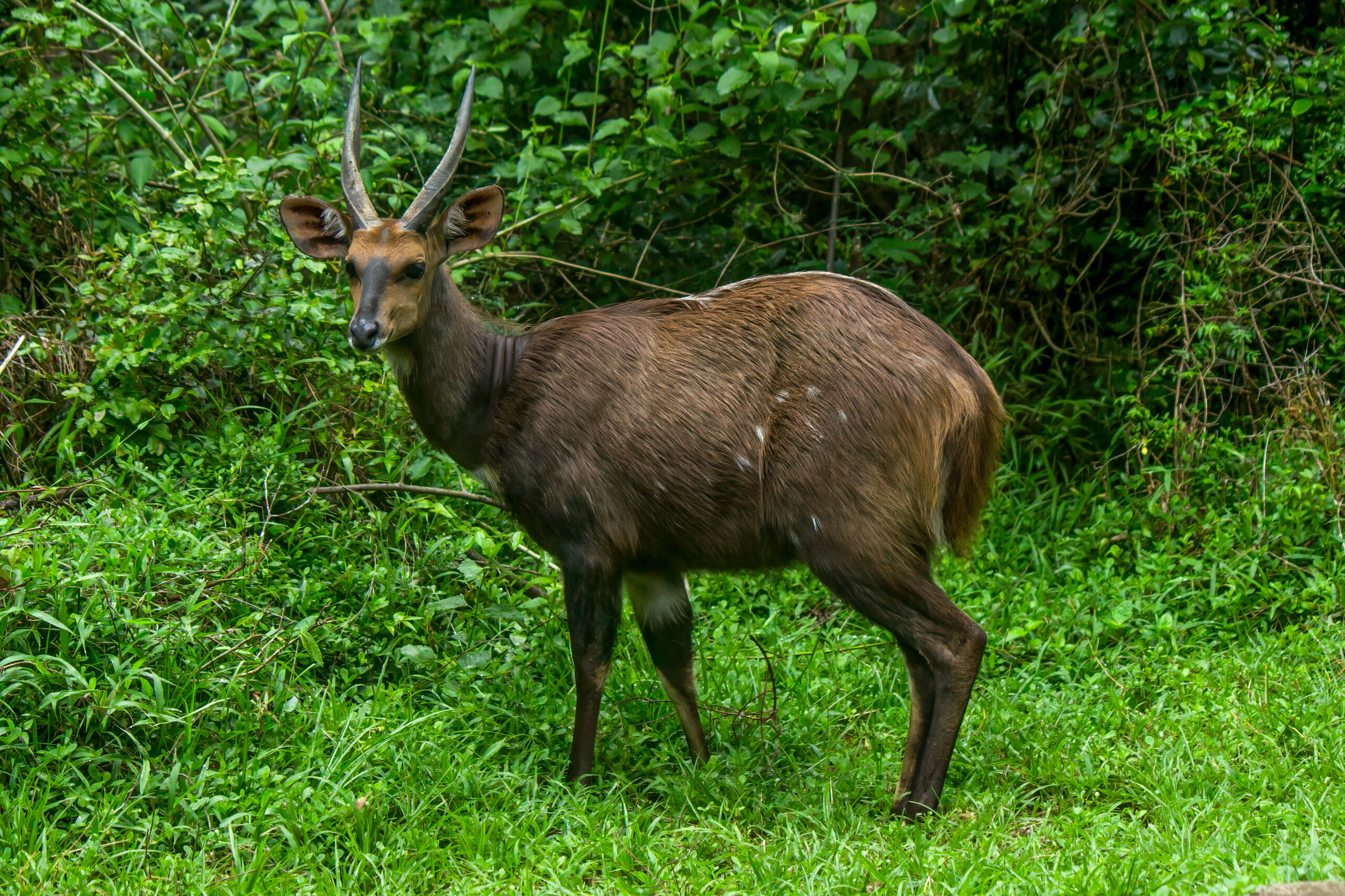Description
The nilgai (Boselaphus tragocamelus), also known as blue bull, is a large antelope native to the Indian subcontinent. It is the largest Asian antelope, with males weighing between 200-300 kg (440-660 lbs) and standing about 1.5 meters (4.9 ft) tall at the shoulder. Females are smaller, typically weighing 120-200 kg (265-440 lbs). The species exhibits sexual dimorphism; males have a bluish-grey coat and short pointed horns, while females are tawny brown and lack horns. Juveniles are similar to females. Both sexes have a white patch on the throat and prominent white spots on the cheeks. Its closest relative, the four-horned antelope (Tetracerus quadricornis), is much smaller, only reaching about 60 cm (24 in) at the shoulder, and is reddish brown in color.
Diet & habitat
Nilgais are predominantly found in the grasslands, scrub forests, and agricultural areas of India and Nepal. They prefer open habitats with sparse tree cover. Nilgai are herbivorous, primarily feeding on grasses, herbs, and leaves of trees and shrubs. They are known to consume crops, which often brings them into conflict with farmers. Nilgai use their prehensile lips to grasp leaves and shoots, and they have a keen ability to select the most nutritious parts of plants.
Behavior
Nilgai are most active during the cooler parts of the day, such as early morning and late afternoon. They are generally shy and elusive, relying on their keen sense of smell and hearing to detect predators. Socially, nilgai form small herds consisting of females and their offspring, while adult males are usually solitary or form small bachelor groups. During the breeding season, males become more territorial and may engage in displays and fights to establish dominance.
Reproduction
The breeding season for nilgai typically occurs from November to March. Males become more vocal and aggressive during this period, using their horns in combat to win mating rights. After a gestation period of about 8-9 months, females give birth to one or two calves. Calves are hidden in dense vegetation for the first few weeks of life to protect them from predators. Mothers are highly protective and will aggressively defend their young. Nilgai have a life expectancy of around 12-15 years in the wild.
Status
The nilgai is listed as least concern by the IUCN due to its wide distribution and relatively stable population. However, habitat loss, poaching, and conflict with agriculture pose significant threats. In some areas, they are considered pests due to their crop-raiding behavior, leading to calls for culling. Conservation efforts focus on habitat preservation and mitigating human-wildlife conflict to ensure the continued survival of this iconic species.







